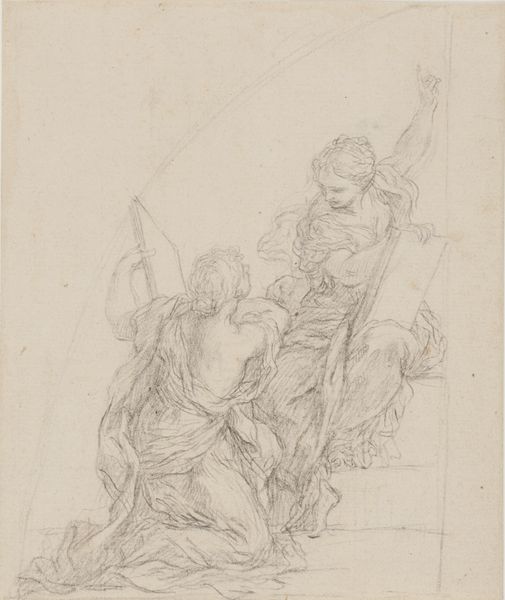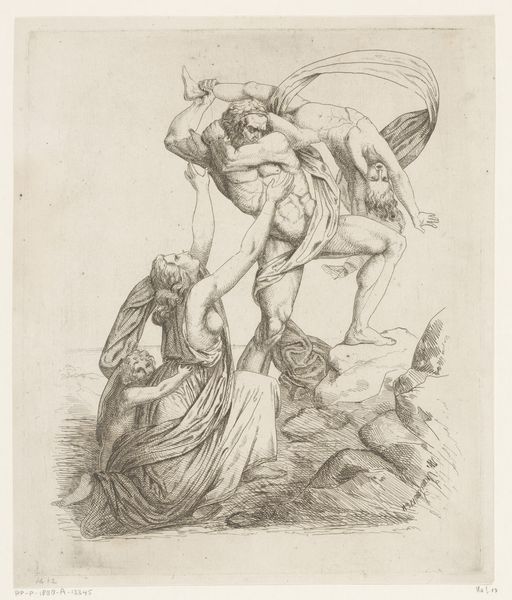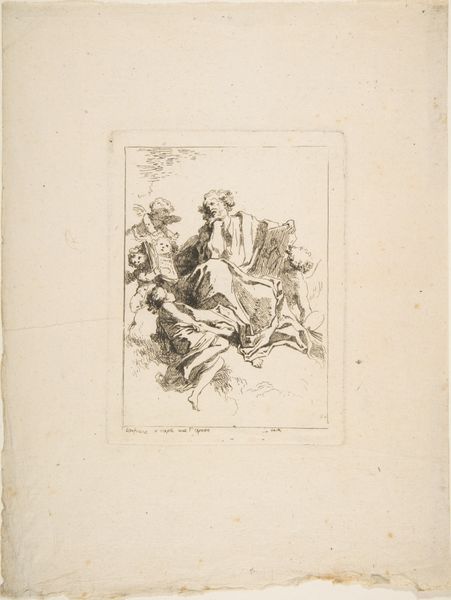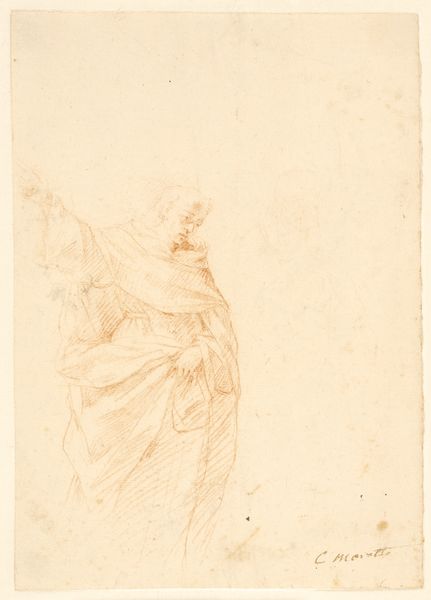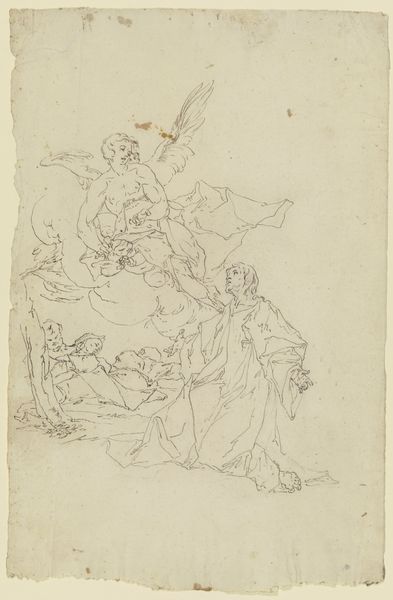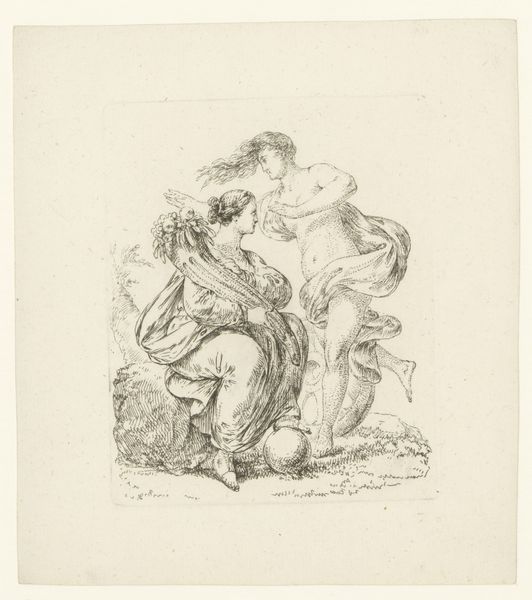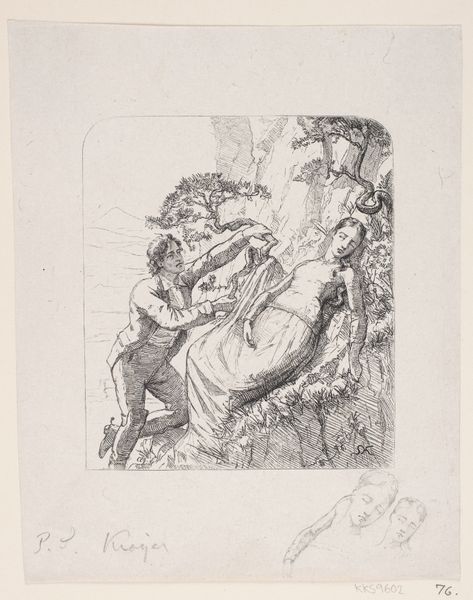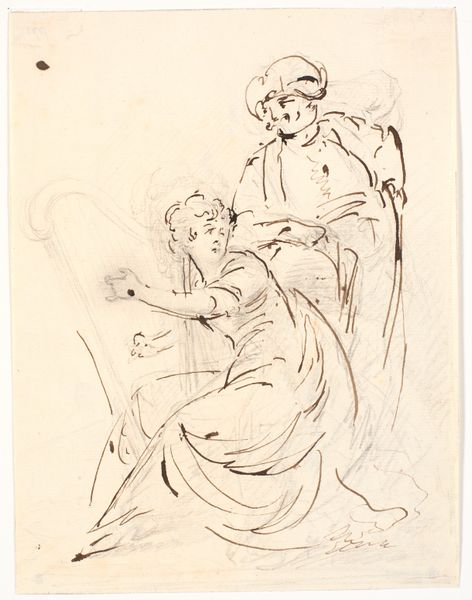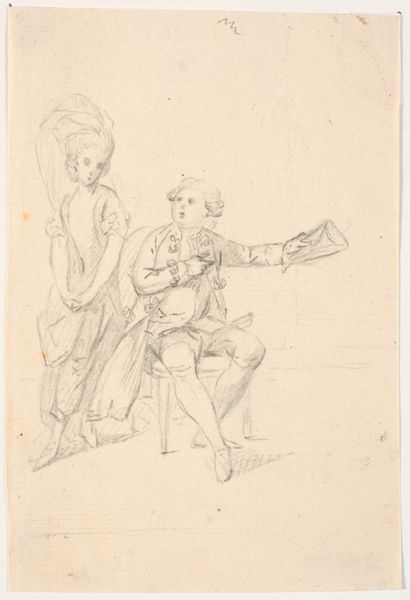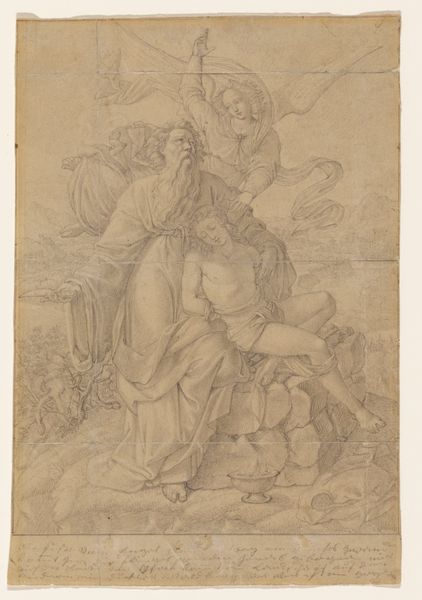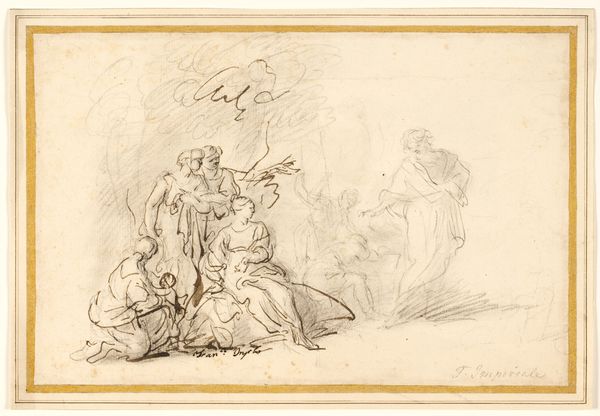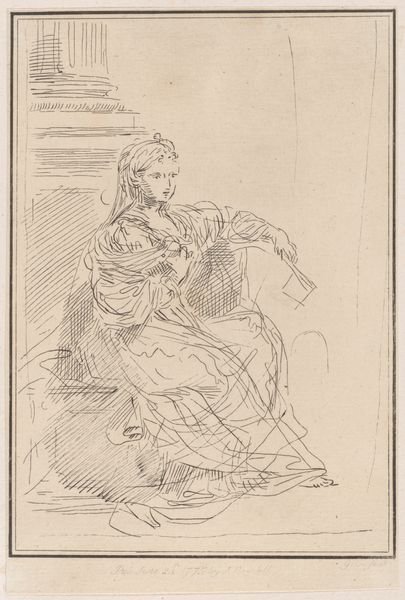
Harpespillende dame. Bag hende en turbanklædt mand 1768 - 1771
0:00
0:00
drawing
#
drawing
#
amateur sketch
#
light pencil work
#
pencil sketch
#
incomplete sketchy
#
ink drawing experimentation
#
pen-ink sketch
#
sketchbook drawing
#
watercolour illustration
#
sketchbook art
#
watercolor
Dimensions: 274 mm (height) x 202 mm (width) (bladmaal)
Curator: Here we have C.A. Lorentzen's drawing, "Harpespillende dame. Bag hende en turbanklædt mand," created between 1768 and 1771. Editor: It's remarkably airy, isn’t it? Almost a whisper of a drawing. The delicate pencil lines suggest a fleeting moment, like a captured melody. Curator: It’s definitely more sketch than finished piece, a work that foregrounds the raw process of art making, a peek into Lorentzen's studio. I see it as a study in form and composition with its emphasis on the materiality of drawing itself—the paper, the pencil, the artist's hand. Editor: But even in its unfinished state, it tells a story. I'm drawn to the contrast. The woman playing the harp appears to be the picture of European elegance, yet behind her looms a turbaned figure. It prompts questions of colonial influence and perhaps even class disparity, if we consider the relationship to musical patronage at the time. How does this fit into the power structures of the late 18th century? Curator: Exactly, it's not merely about aesthetic pleasure. This pencil study is about the craft of image-making during that time, and that extends to access of artistic training within a particular socio-economic environment. And consider the societal conventions of representing people, and how they have evolved, considering Lorentzen's place in it all. Editor: And the implied gaze of the turbaned man is compelling. What’s his relationship to the woman, to the music, to the act of creation itself? Is it about the orientalist fantasies of the period, as expressed through costume, as we see mirrored through global power dynamics? I can’t help but read a subtle tension into the scene, questioning what power structures this work subtly reproduces. Curator: Perhaps it’s both process and representation, working in tandem. This wasn't simply the application of lines on paper. It was an exploration and documentation of real life with its real materials and instruments. Editor: The sketch's ambiguity is powerful. It leaves us questioning, debating. Ultimately, it urges us to examine our assumptions about history and artistic representation itself. Curator: Right. Whether studying its lines or reading it as a narrative of social forces, it's not simply passive art viewing. We consider artistic means and materials just as seriously. Editor: It's the kind of artwork that encourages one to pause and look beyond the surface, challenging how we contextualize historical narratives of artmaking.
Comments
No comments
Be the first to comment and join the conversation on the ultimate creative platform.
